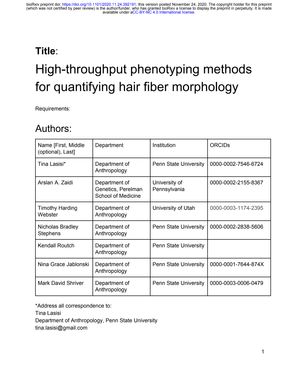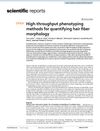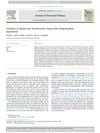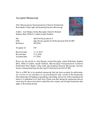High-Throughput Phenotyping Methods for Quantifying Hair Fiber Morphology
November 2020
in “
bioRxiv (Cold Spring Harbor Laboratory)
”

TLDR Quantifying hair shape is better than using racial categories for understanding hair characteristics.
The study introduced a high-throughput protocol for preparing and imaging human scalp hair to measure both longitudinal (curvature) and cross-sectional morphology. A new Python package was developed to process these images, segment them, and extract relevant measurements. The methods were applied to a sample of 140 individuals of mixed African-European ancestry, showing that quantifying hair morphology is more beneficial than using qualitative classifications or racial categories. The findings also challenged the belief that cross-sectional morphology can predict hair curvature.






